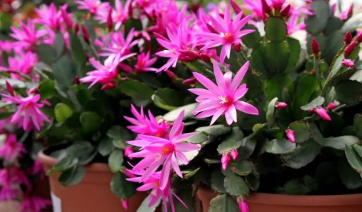Master Gardeners: A look at the Easter Cactus
Published 12:00 am Saturday, December 4, 2021

- Courtesy photo Easter Cactus (Rhipsalidopsis gaetneri)
|
Getting your Trinity Audio player ready...
|
Published by Garden Lovers Club
Edited by John Green
Editor’s note: This is part three of a three-part series
It’s truly amazing how quickly this year is zooming by. The joy of Christmas is just around the corner and a new year quickly approaching! This is the final segment of a three-part series, where we will discuss the Easter cactus. While there are numerous similarities to the Thanksgiving cactus and Christmas cactus, there are also differences such as flower coloration and the plants sensitivity to water.
The Easter Cactus (Rhipsalidopsis Gaetneri)
Published by Garden Lovers Club. Edited by John Green
This is another type of holiday cactus which is like the Christmas and the Thanksgiving variety, but the main difference between these plants is that the Easter cactus blooms in the spring of the year. They typically begin budding in March, and blooms can be enjoyed during April and May. The leaves also vary a bit from the other two plants that we have discussed. These leaves are still segmented and broad, but they have small bristles at the ends of the foliage that help distinguish them. In addition, the flowers themselves are a bit more star-shaped than the others.
The blooms that form on Easter cactus plants are often a bit brighter in coloration, so you can expect to see bright pinks, reds, and royal purple petals, which are perfect for adding a festive aspect to your dining area for Easter dinner. There are a few variations that produce white blooms, but they are less common than the bright vivid blooms. These plants require the same indirect sunlight and well-drained soil, but they are especially sensitive to excess water, so make sure to wait until the top of the soil is dry before watering your Easter cactus. They are also a little stubborn, so too much shade and too much direct sunlight will cause issues.
The trick to getting your Easter cactus to produce beautiful blooms is to grow the plant outdoors from June until August. Make sure it is located in a shady place, and when fall arrives, bring the plant indoors to get rest during the cold months of the year. Buds should start to appear in late February or early March. Limit direct sunlight and water during the resting period and try to keep the temperature between 45 degrees Fahrenheit and 59 degrees Fahrenheit.
Helpful Tips
- All Holiday cactus needs to be forced to bloom, which occurs about two months before the blooming period. This requires a few weeks of shorter days, less water, and longer periods of uninterrupted darkness.
- Never overwater these plants because these tropical plants are sensitive to excess water on their roots, especially the Easter cactus.
- High temperatures, excessive heat fluctuation, and dry air are not ideal for a holiday cactus, so if your home is excessively dry during the cooler months, make sure to mist the leaves to create humidity around the plants.
If you would like more information or to have your gardening questions answered please contact us:
Orange County TX Master Gardeners
Website: https://txmg.org/orange
Facebook: Orange County Texas Master Gardeners Association.
Orange County Master Gardner Helpline: (409) 882-7010
Email: extension@co.orange.tx.us






